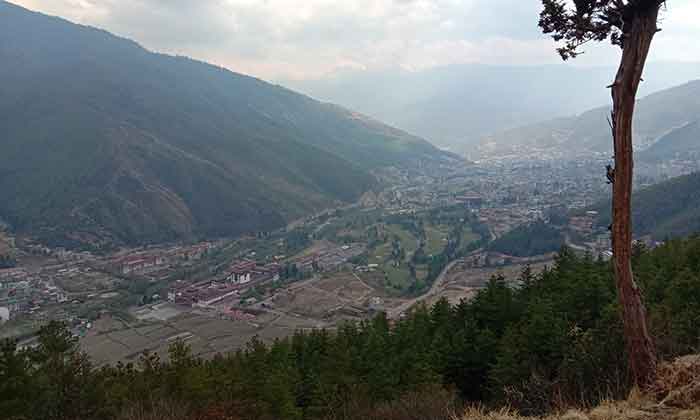Air quality monitoring stations report drop in the particulate matter
Choki Wangmo
Air quality monitoring stations in Thimphu, Phuentsholing, Gedu, and Chukha recorded a drop in the particulate matter (PM) in the last three months.
PM is identified internationally as one of the main causes of negative health impacts from air pollution in the urban areas. The concentration of particulate matter less than 10 μm in diameter (PM10) is the parameter measured and monitored through the existing stations in Bhutan. Air quality measurement is commonly reported in terms of micrograms per cubic meter (µg/m3).
In Thimphu, a significant drop was observed in February this year, with a PM10 level of 34.53 µg/m3 compared to last year’s 61.19 µg/m3. Last month, Phuentsholing recorded double the amount of PM10 reduction from last year.
Due to Covid-19 outbreak and resulting lockdowns and curfews, nations across the world have recorded a drastic improvement in the air quality. According to international media sources, the Himalayas are visible in parts of India 125 miles away for the first time in 30 years.
The India Today Data Intelligence Unit from March 16-17 reported on an average 33 percent improvement in the air quality index.
However, an official with the National Environment Commission said that there was no visible difference in the level of PM because the country was not under lockdown. “Our industries are running and there is continuous traffic,” she said.
Changes in the level of PM is attributed to dry winter months in which the level is expected to change due to climate factors.
This year, emissions were within the permissible limit as per the Ambient Air Quality Standards 2010. Earlier last year, the stations in Phuentsholing and Samdrujongkhar recorded PM amount beyond the permissible limit.
According to the standards, the permissible limit of PM10 in the industrial area is 200 μg/m3, 100 μg/m3 in mixed area and 75 μg/m3 in sensitive area on 24 hours average basis.
“Mixed Area” refers to areas where residential and/or commercial activities take place and “Sensitive Area” refers to areas where sensitive targets are in places like hospitals, schools, and sensitive ecosystems.
Air pollution in Bhutan is still largely particulate matter that comes from a variety of sources such as vehicular emission, space heating through wood and other fuels, forest fires, open burning of agricultural debris, open burning of waste and windblown dust particles, among others.
A recent American research study found that air pollution is linked to significantly higher rates of death from Covid-19. The study found that a small increase in long-term exposure to PM2.5 leads to a significant increase in the Covid-19 death rate.
A separate report from scientists in Italy noted that the high death rates seen in the north of the country correlate with the highest levels of air pollution.
According to experts, breathing in the microscopic pollutants from fuel combustion, like automobiles, refineries and power plants, and indoor sources like tobacco smoke inflames and damages the lining of the lungs over time, weakening the body’s ability to fend off respiratory infections.


